The Vegas Golden Knights defied the odds in their first NHL season. From winning the Pacific Division crown to representing the Western Conference in the Stanley Cup Final, the league’s newest expansion franchise sent the hockey world into a tailspin. Vegas’ first season was record-setting in many ways, and the excitement surrounding the team going into year two is at a fever pitch. But how will they fare compared to other expansion teams in their second season? Although it is unknown how Vegas will do in 2018-19, the list below looks back on how prior expansion franchises from 1967 onwards performed in their sophomore campaigns.
Class of 1967
Once the Original Six was established in 1942, the next wave of expansion did not come until 1967 when six more teams were added to the league. The Pittsburgh Penguins, Philadelphia Flyers, Los Angeles Kings, St. Louis Blues, Minnesota North Stars, and Oakland Seals were a part of the Class of ’67.
After reaching the Stanley Cup Final in their first season, the Blues returned to the championship series after notching a record of 37-25-14 for 88 points in the 1968-69 season. Although they did not hoist Lord Stanley’s mug that year, St. Louis was still the premier team out of this group of sophomore squads.
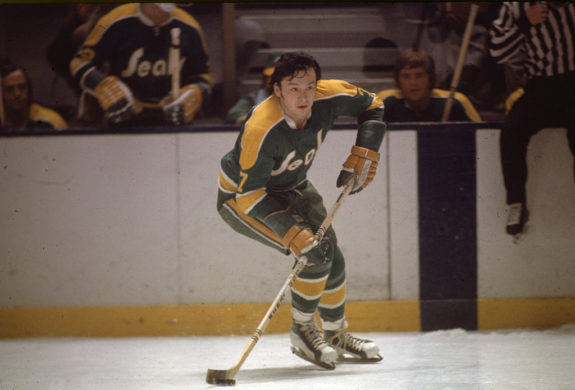
Nineteen points behind the Blues were the Seals, who finished year two with a record of 29-36-11 for 69 points and a postseason berth. Oakland would come up short in the first round losing in seven games.
The Seals would eventually change their name to the California Golden Seals in 1970, which was followed by another re-branding effort in 1974 when their name switched to the California Seals. The team relocated to Ohio in 1976 when they became the Cleveland Barons.
Oakland was knocked out of the 1968-69 playoffs by a fellow California club in the Kings. Rocking their classic purple and gold jerseys at the time, Los Angeles concluded year two with 58 points of a 24-42-10 record. The Kings finished their inaugural campaign with 72 points, but did not advance out of the opening round of the playoffs.
The final playoff team out of this group was the Flyers, who notched 61 points with a 20-35-21 record. Philadelphia’s leading scorer that season was centre Andre Lacroix, as he racked up 24 goals and 32 assists for 56 points.
Philadelphia’s cross-state rivals, the Penguins, were the fifth-best team out of this class. Pittsburgh’s record of 20-45-11 earned them 51 points, but it was not enough to reach the playoffs. The 1968-69 campaign would also be head coach George “Red” Sullivan’s final season as the Penguins bench boss.
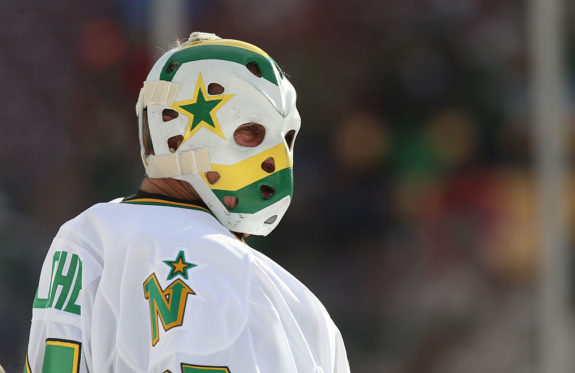
Rounding out the six-team group were the North Stars. Like the Penguins, Minnesota collected 51 points, but had two fewer wins with a record of 18-43-15. Although their season was rather pedestrian, the North Stars had the second-highest attendance record out of the Class of ’67 with an average crowd of 12,919 spectators per game.
1971-72
In 1970, a pair of new franchises entered the fray, as the Vancouver Canucks and Buffalo Sabres expanded the NHL to 14 teams.
After both teams earned 24 victories each in year one, the Sabres proved to be the better squad in the 1971-72 season. Buffalo had a record 16-43-19 equalling to 52 points. Sporting their classic royal blue and gold uniforms, Buffalo surpassed their fellow expansion-club Canucks, yet they still finished second-to-last in the East Division and failed to reach the playoffs.
The next team higher than Buffalo were the Detroit Red Wings with 76 points, a differential of 25 points.
Even though Vancouver had four more wins than Buffalo, the Canucks finished with three fewer points at 48 with a record of 20-50-8. Vancouver finished their sophomore NHL season as the worst team in the league.
Goals were hard to come by for Vancouver–they tied for a league low with 203–but spending time in the penalty box was commonplace for the Canucks. The 20-win squad amassed 1,092 penalties-in-minutes, which was fourth-highest in the NHL.
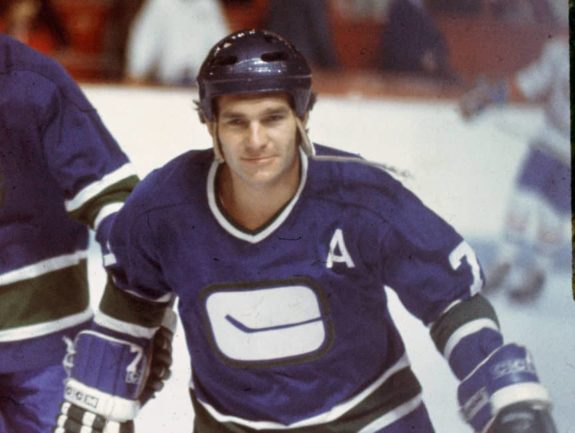
The other team with 203 goals that year were the Sabres, but they did have the have a top-10 goal scorer on their roster. Rick Martin was sixth in the NHL with 44.
1973-74
Two years was all it took for the next wave of expansion to occur when the Atlanta Flames and New York Islanders entered the NHL in the 1972-73 season. While both teams didn’t dazzle in year one, their second seasons in the league contrasted drastically.
After recording 65 points in their first season, the Flames saw an uptick in overall production when they went 30-34-14 for 74 points. Their second-year improvement landed them a spot in the postseason, but Atlanta was swept out of the first round by the eventual Stanley Cup Champion Flyers.
Atlanta was the only playoff team that season to have a goal differential below zero, as their differential was minus-24. Atlanta would eventually relocate in 1980 to become the Calgary Flames.
While Atlanta reached the postseason, the Islanders were far from it in their sophomore season as an NHL franchise. New York ended the year with a 19-41-18 record for 56 points and last place in the East Division.
Fortunately for the Islanders, their leading scorer was rookie defenseman Denis Potvin, who rattled off 17 goals and 37 helpers for 54 points, which helped him claim the Calder Memorial Trophy for rookie of the year.
Potvin’s legendary career saw him win three James Norris Trophies and four Stanley Cup championships.
1975-76 NHL Expansion
The NHL became an 18-team league in the 1974-75 season when the Washington Capitals and Kansas City Scouts were added. While the 1973-74 season saw one second-year team make the playoffs, the sophomore teams in 1975-76 did not even have a punchers chance of making the postseason.
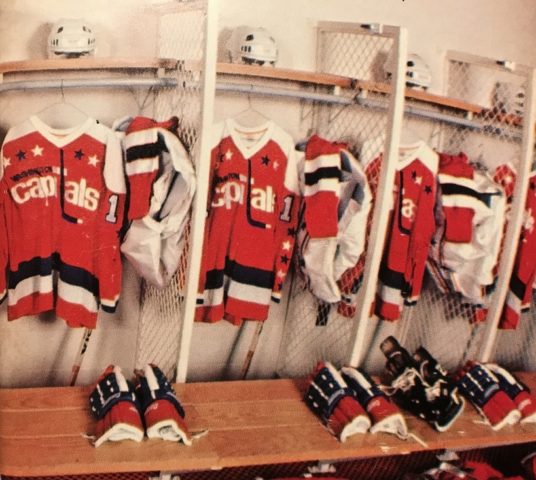
Kansas City’s second NHL campaign saw them go 12-56-12 for a measly 36 points and last place in the Smythe Division. The Scouts season was ugly enough to deter fans from attending games, as the Scouts averaged 7,892 spectators a game at Kemper Arena. That total was second-worst in the NHL.
The Scouts second season in the league would be their last in Kansas City, as the team relocated to Denver to become the Colorado Rockies. Their stint in Mile High country concluded in 1982 when the team moved again, this time to East Rutherford, New Jersey to re-brand as the Devils. Although it has been 42 years since the Scouts left the state of Missouri, interest in hockey seems to be fairly prominent in Kansas City.
It was a brutal season for Kansas City, but the only team worse than the Scouts in 1975-76 were the Capitals. D.C.’s newest sports franchise went 11-59-10 for 32 points in year two, which placed them right in the basement of the Norris Division.
The second-worst team in their division were the Detroit Red Wings, who had 62 points that year. Washington’s abysmal second year included a 12-game losing streak from Dec. 29, 1975 to Jan. 21, 1976 where they allowed five or more goals in nine matches. Once they dropped their 12th consecutive game, their record was at 3-39-5.
1980-81
Four more squads were brought into the NHL in 1979 when the Edmonton Oilers, Winnipeg Jets, Quebec Nordiques, and Hartford Whalers were absorbed from the World Hockey Association. Year two for the quartet of former WHA teams saw a pair of clubs reach the playoffs.
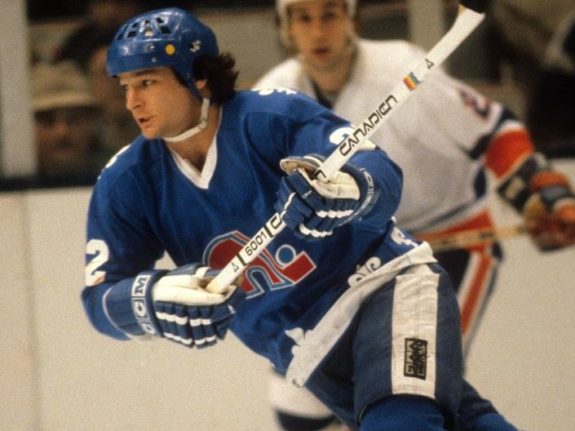
The kings of the sophomore crop in the regular season were the Nordiques after they finished with a record of 30-32-18 for 78 points. Quebec’s stint in the postseason only lasted one round when they were ousted by the Flyers in six games. Although they did not advance far, the Nordiques collecting a pair of wins against a heavy favorite was admirable.
Scoring came quite easy for Quebec in large part because they had two of the NHL’s top-ten scorers in 1980-81. Peter Stastny recorded 109 points for sixth best in the league, while Jacuqes Richard was in a three-way tie for 10th with 103 points.
The Nordiques would jump ship from Quebec City in 1995 when they became the Colorado Avalanche, who are still based out of Denver.
Edmonton joined the Nordiques as the other second-year squad to clinch a playoff berth after finishing with a record of 29-35-16 and 74 points in the Smythe Division.
Unlike Quebec, the Oilers broke past the first round barrier by defeating the Montreal Canadiens in a 3-0 sweep to advance to round two. Edmonton’s postseason run ended in the second round after losing to the New York Islanders in six games.
Highlighting Edmonton’s season was the continued dominance of Wayne Gretzky as the NHL’s premier scorer. In his second NHL season, Gretzky led the league with 164 points, which earned him both the Art Ross Trophy for leading scorer and the Hart Memorial Trophy for most valuable player.
The third Canadian team of this group in the Jets was one of two second-year clubs in 1980-81 to miss out on the postseason. Along with placing last in the Smythe Division, Winnipeg finished as the worst team in the NHL with 32 points off a 9-57-14 record. This was a steep decline from their inaugural season record of 20-49-11 for 51 points.
Winnipeg would go onto clinch playoff berths seven straight seasons afterward but were relocated to Arizona in 1996 to become the Phoenix Coyotes.
Rounding out this class were the Whalers, who finished the season with a 21-41-18 record and 60 points for fourth place in the Norris Division. Like the Jets, Hartford saw a dip in production from their first season, as they advanced to the playoffs the season prior.
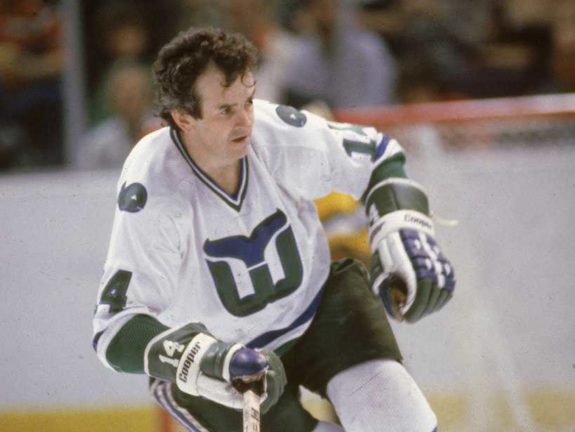
Hartford’s leading scorer was Mike Rogers with 105 points, which was tied for the seventh-best total in the NHL with Charlie Simmer of Los Angeles. Rogers’ 65 assists were also tied for ninth-highest in the league.
In 1997, the Whalers packed their bags and left for Raleigh to re-birth themselves as the Carolina Hurricanes.
The Mid-1990’s
12 seasons was how long it took until the NHL expanded once again with the welcoming of the San Jose Sharks in the 1991-92 season. It was rough treading in the Bay Area during year one, as the Sharks finished with just 39 points.
However, their second season was seemingly worse. San Jose wrapped year two with an 11-71-2 mark and 24 points, finishing in the cellar of the Smythe Division and tied for last in the overall NHL standings. Oddly enough, the Sharks won their first game of the season 4-3 over the Winnipeg Jets, but followed that up with a nine-game losing skid.
San Jose’s second NHL campaign was also the same year that the Ottawa Senators and Tampa Bay Lightning debuted as expansion teams.
Florida’s first NHL franchise experienced an uptick in wins and points in their second season. After amassing just 53 points in their inaugural campaign, Tampa Bay finished the 1993-94 season with 71 points off a 30-43-11 record. Their point total increased by 18 from their first season, but the Lightning still finished at the bottom of the Atlantic Division.
The Senators also improved in the same areas a Tampa Bay from year one, but it was still tough sledding for Canada’s newest club. Ottawa concluded their second season with a 14-61-9 record for 37 points and last place in both the Northeast Division and the entire league. The Senators still improved slightly from their debut campaign, as they recorded just 24 points in the prior season.
While the Senators and Lightning were enduring their second year, the 1993-94 season also included the addition of the Florida Panthers and Anaheim Mighty Ducks. The NHL’s 25th and 26th-newest franchises did relatively well in year one, with both teams racking up 33 wins and the Panthers within one point of reaching the postseason.
And in a shortened 48-game season, the Panthers and Mighty Ducks inched closer to the playoffs in back-to-back years, but could not break the barrier.
Florida’s second NHL squad finished with a 20-22-6 record for 46 points, which was once again one point shy of a playoff berth. The Mighty Ducks were also within a few points of the playoffs, as they reached 37 points off a 16-27-5 record. California’s third franchise was just five points out of the postseason.
1999 And The Early 2000’s
It took until the 1998-99 season for the NHL to expand to 27 teams when the Nashville Predators were welcomed to the league. After a decent inaugural season for an expansion franchise, the Predators improved slightly in the 1999-00 season.
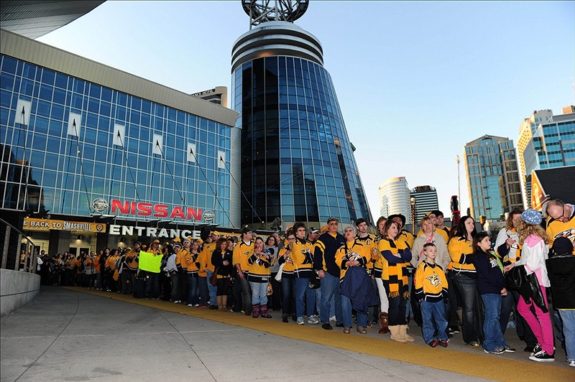
Nashville’s 70 points off a 28-40-7-7 record were a modest uptick from their total of 63 points in year one. The Predators finished last in the Central Division, a group that had the top-two regular season teams in the league in the St. Louis Blues and Detroit Red Wings.
19 years after the Flames relocated to Calgary, hockey returned to the city of Atlanta in the 1999-00 season when the Atlanta Thrashers became the NHL’s 28th team. Their inaugural season was abysmal, as the Southern U.S.’ newest team went 14-57-7-4.
Drastic improvements were made in the Thrashers’ second season. The 2000-01 campaign saw Atlanta go 23-45-12-2 for 60 points, and although they still finished second-to-last in the Southeast Division, a 21-point improvement is always encouraging. Atlanta’s leading scorer was Ray Ferraro with 29 goals and 47 assists for 76 points.
The NHL’s return to Atlanta was relatively short-lived, as the Thrashers left town in 2011 to become the Winnipeg Jets.
The final wave of expansion before the Golden Knights came in the 2000-01 season when the Minnesota Wild and Columbus Blue Jackets entered the league.
Minnesota finished the 2001-02 season as the better of the two sophomore squads, as the Wild went 26-35-12-9 for 73 points. Although they placed last in the Northwest Division, Minnesota’s attendance record of 18,455 spectators-per-game was seventh-highest in the NHL.
Next on the attendance list were the Blue Jackets with an average of 18,136 people-per-game, which is even more impressive given that Columbus was the worst team in the NHL in 2001-02.
The Blue Jackets had a record of 22-47-8-5 for 53 points in their sophomore season. One of their assistant coaches was Gerard Gallant, the current head coach in Vegas.
There is no clear indication as to how the Golden Knights will fare in year two compared previous expansion teams in their second season. But if their inaugural season pours over into the 2018-19 campaign, Vegas could very well have the finest sophomore season of any expansion team in league history. ** they have been off to a rough start
* originally published in July 2018